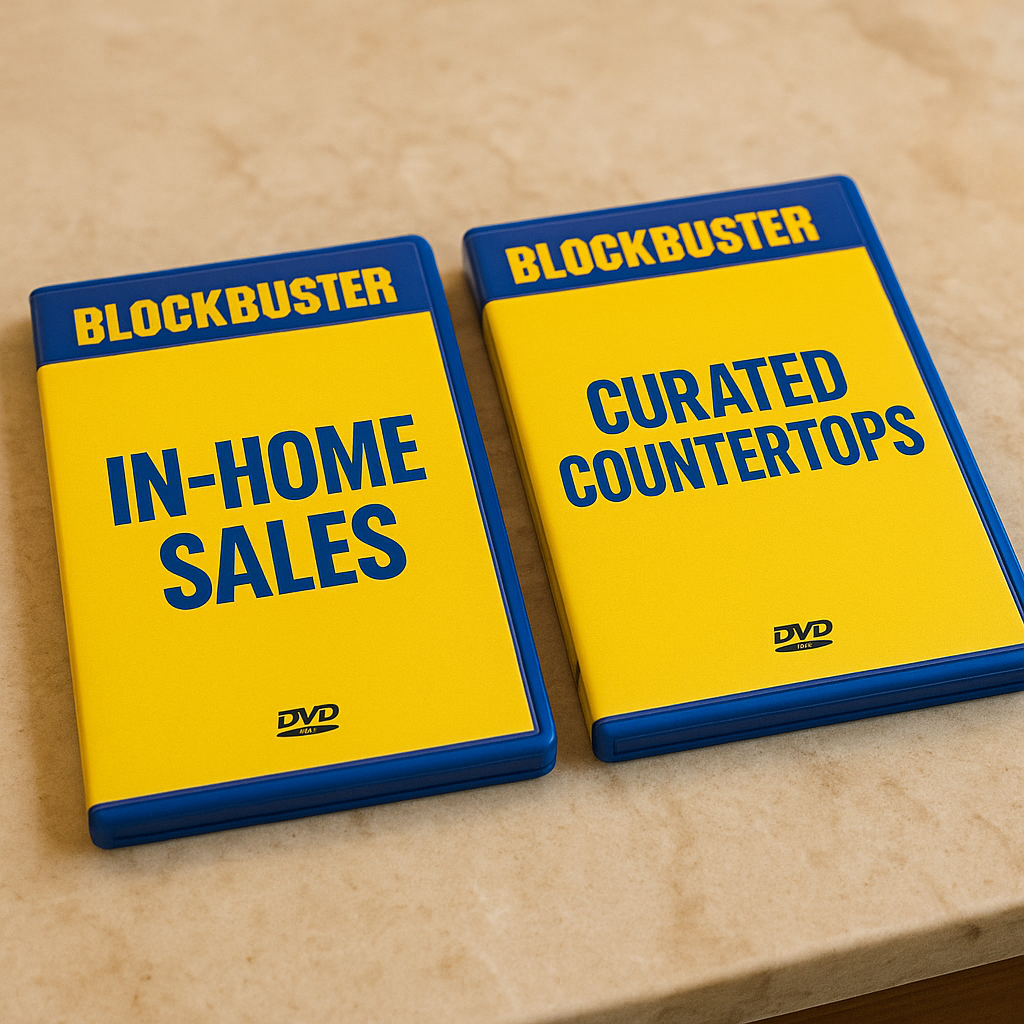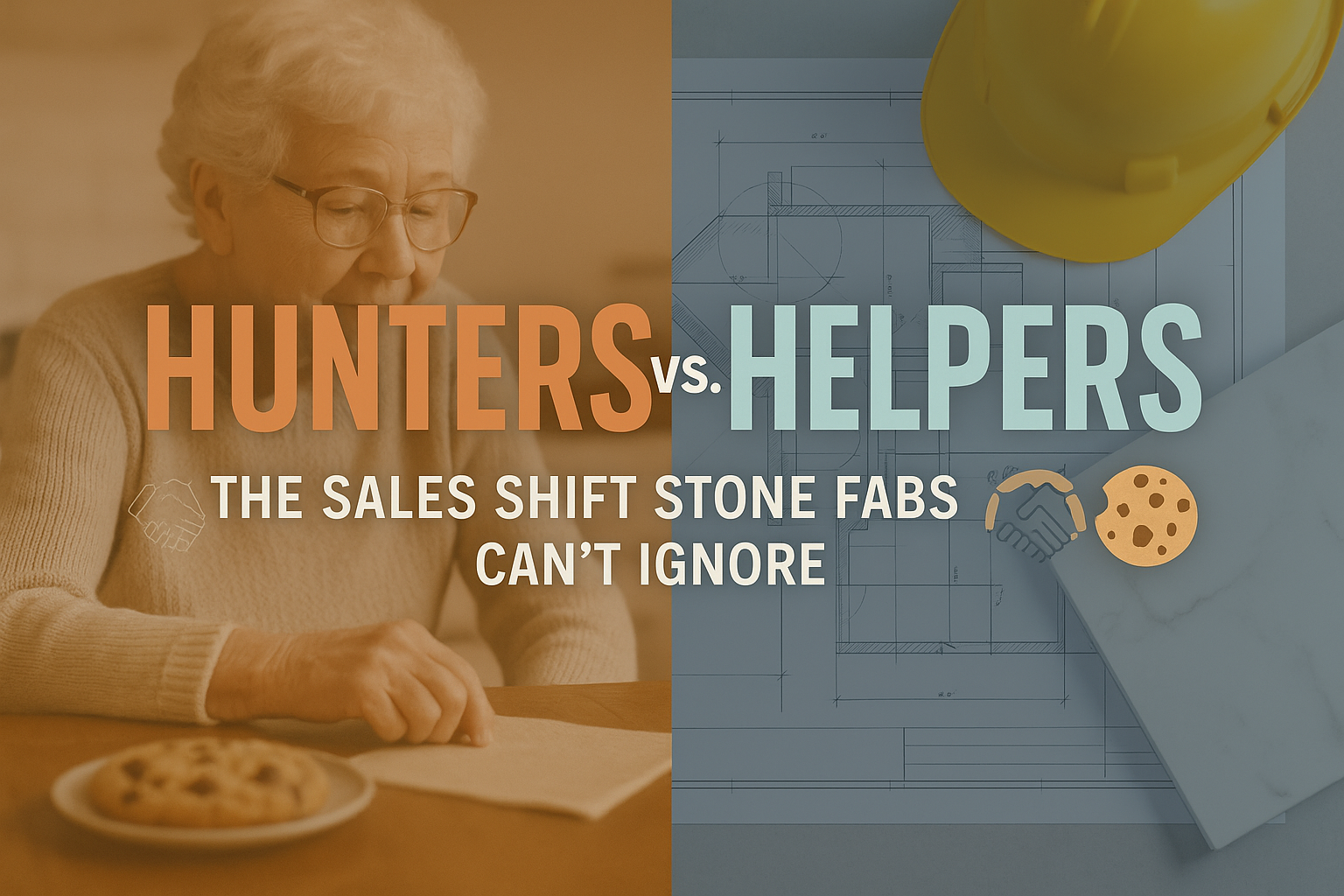Hiring is hard, especially when you’re looking for skilled workers. At the start of 2022, 91% of businesses said they had a difficult time finding skilled workers. A year later, more than three-quarters of companies surveyed say the skilled labor shortage has gotten even worse.
As an example, one of the most challenging jobs to fill for surface fabricators is installer. It’s a labor-intensive, physically demanding job. You have to carry huge pieces of expensive granite, walk them into a house, and often work in areas with limited workspace. You have to make sure not to damage the material or their home and then you have to get to work. You never know what you’ll find, how the former cabinets were trimmed, or what you’ll have to do to overcome challenges. Yet, customers expect professionalism at every step, communication and craftsmanship. The spouse may be hovering nearby so it’s kind of like a performance at times.
With business on the books and the opportunity for more jobs on the horizon, you can’t ignore the need. To solve for your labor challenges, you have to do two things: Find good people and figure out how to work with fewer of them.
I’ve got ideas about both, but let’s start with hiring. If you want to find the quality workers you need, you’ve got to change your mindset.
Change How You’re Recruiting: Make Employees Your Customers
In the past, the hiring process was centered around applicants selling you on why you should hire them. Today, it’s the opposite. You need to flip the script and let people know what’s in it for them if they work for you. Think about your potential hires as customers and explain how this job helps them achieve their goals, not yours.
This sounds simple, but it’s a major shift for many. It might help to think of it in terms of advertising and marketing. If you’re trying to attract customers, you carefully craft a brand image, demonstrate the benefits of your products, and explain how you can improve their lifestyle. You can do that with this job, too.
Here’s an example of a job description and how we reworked it to sell the advantages rather than the requirements.
BEFORE
AFTER
Hire To Train
One East Coast fabricator we worked with wanted to find a salesperson with design skills who knew a very specific type of software. They got applications, including some strong salespeople and some designers. But nobody had experience with their software. They passed up some potentially great candidates because they were looking for the perfect candidate.
Those unicorns rarely (if ever) exist.
If you use traditional methods for hiring, you tend to get the job hoppers that may leave you the second someone is willing to pay more. We’ve talked to three fabricators, ranging from 2 to 40 million in revenue, who thought their turnover was around 15%. After we did a little math, we uncovered that turnover was more than 50%. It was because they were hiring the job hoppers.
FYI, an easy way to calculate your turnover is to look at the number of employees at the end of the year divided by the number of W2s issued throughout the year.
A more effective method is to target a segment of workers that are not actively looking for a new job, but the job you have offers career advancement or a lifestyle upgrade.
When you’re hiring, think about the things you must have in an employee and what you can train. Can you take that high-performing salesperson and teach them how to use the software? In our experience, finding the person with the basic skills you must have, along with the right attitude and cultural fit, and then upskilling them is often the best solution.
As Jim Collins put it in his book Good to Great, companies that went from good to great didn’t focus on where to drive the bus until they first got the right people on the bus. “If we get the right people on the bus, the right people in the right seats, and the wrong people off the bus, then we’ll figure out how to take it someplace great.”
Use Feeder Positions
Can you take someone already in your shop, train them for your opening and promote them? Large companies create “feeder positions” to help give employees the experience they need to move to the next level.
Doing so can let you hire people at a lower level, do some training, and make sure they’re the right fit for the next level. If so, great! Then, you can hire their replacement and it helps with filling that job as well, because you can show how the feeder job can lead to bigger opportunities.
In small businesses, a common complaint from workers is that there’s no room for career advancement. This helps by giving your best people an opportunity to grow and learn new things.
Find Workers With Similar Skills
Are there labor pools you can pull from other industries that have some overlap that you may be able to offer a better opportunity?
We’ve found a great place to look is roofers. Roofing is seasonal in most parts of the country. Jobs can be unpredictable and there may not be any work during the cold, snowy winter months. It’s also one of the most dangerous jobs. More roofers suffered fatal work injuries than any other occupation except loggers and hunters.
Yet, roofers have some compatible skills with installers. Many are handy with tools, comfortable dealing with homeowners, and they’re hard workers. As a fabricator, it’s possible you can offer them a better deal. Compared to roofing, you can offer plenty of hours, year-round work, and a steady paycheck — even a benefits program. And they’ll still get paid if it’s raining!
Change Your Job Descriptions
Stop demanding long lists of qualifications in your job descriptions. They can only serve as checklists for potential job applicants. They go down the list and when they see they don’t have everything you want, they may never apply — even if they’d be a great job candidate. List only the most essential skills you must have and forget about the rest. You can always probe more deeply when you talk to them if it’s important.
Like in the example above about roofers, your ad could focus instead on the benefits of coming to work for you rather than what you need.
Recognize What Today’s Employees Want
Today’s workers are also looking for more than just a paycheck. The pandemic changed a lot about how people approach work these days. They want value and satisfaction, and they want purpose.
They want to work for an organization they believe in and whose values match their own. They expect the company they work for to have a strong ethical compass and be a force for good.
At the same time, they also want a company that cares about their employees’ well-being and provides at least some semblance of a work-life balance. While salary is still a key driver in attracting and retaining quality workers, a purpose-driven organization with an employee-centric culture is a key driver, especially for younger workers.
Raise and Create
Can you create different ways to approach the job to offer flexibility? For example, can you let people work on flex schedules, three- or four-day workweeks, guarantee weekends off, or offer bonuses for performance rather than just hourly wages?
Did you ever wonder why some companies seem to have no trouble hiring and others are always trying to fill positions? Often, it’s because of the way they approach the hiring process. Here’s a real-life example. Turnover is huge in the fast-food industry and, despite raising wages, restaurants are struggling to find people willing to do the job.
A manager at one Chick-Fil-A took a different approach than their competitors by moving to three-day, 40-hour workweeks. In an industry that sees, on average, a 144% turnover rate, he went more than nine months without any turnover. For a single job opening, more than 420 people apply.
Meanwhile, his competitors are begging people to work for them and continually raising wages.
Rather than keep increasing pay, look for what or how the job can be done, so one person can accomplish more within the same amount of time. By default, this increases productivity and makes the position more profitable.
Eliminate Tasks
You should also look at ways to make the job itself better, especially if you have jobs with high turnover.
Early in my career, I worked at a pudding plant. Yes, a plant that made pudding. It was a big facility with plenty of managers and supervisors working with a lot of entry-level people. Everybody loved this one high-level manager, Ron, and I couldn’t figure out why. He was a little odd and didn’t talk much. But if he needed something done, people would bend over backward to make it happen.
I finally asked one of my supervisors why everybody on the floor loves this guy. He told me that when Ron first got hired, the first thing he did was ask his team what was the hardest job in the place. Everyone said cleaning interior product contact surfaces without disassembling food processing tanks. Everybody hated it. It’s the most complex job in making pudding and takes an entire eight-hour shift to accomplish it. If it’s done wrong, the pudding can become toxic and literally kill people.
So, Ron picked the best guy and told him to teach him how to do it. Over the next three weeks, Ron did the job every day and discovered several ways to make the job easier. He gained so much trust and favor with his team because he was willing to get his hands dirty. And he made the job better by eliminating steps.
Artists don’t paint from a photograph. How can you expect to make someone’s job easier without doing it yourself or at least investing the time to observe it first-hand?
As a business owner or manager, it’s your job to fix problems. If the problem is nobody wants to be an installer, it may be partly because the job sucks. So, put on your overalls and do it yourself for a week. You’ll find out how tough it is and maybe find a way to streamline processes or improve the job. And you’ll likely earn some appreciation from your crew.
Survive With Fewer People
Now let’s talk about the second part of the equation. Whether we like it or not, we’re all having to work with fewer people these days. You’ve heard that expression: do more with less. That’s a surefire way to burn people out and create turnover.
In today’s environment, it’s more about finding efficiencies to make the job easier. Often, you can accomplish this by rethinking your workflow and processes. When you don’t have people available to handle the work at hand, I like to approach it using ADE, which stands for Automate, Delegate or Eliminate.
Automate
If there’s a portion of a job you can automate, do it as soon as possible. This reduces the manual work and frees up your employees to focus on more important tasks that you can’t automate. The easiest way to do this is through machines or software.
Eliminate
Can you delegate some portions of work to others to reduce the burden on certain individuals? Finally, can you eliminate steps or organize work differently to make it more efficient?
Here’s an example. For fabricators, scheduling can be a pain. You’re ready to go on a job and the sink hasn’t arrived yet or the quartz isn’t ready. Scheduling isn’t a complicated job, but it is cumbersome. If you have a good system to track your jobs and inventory, is there a reason someone couldn’t handle scheduling from home?
By eliminating the requirement to come into the office, you’re tapping into an entirely different pool of job applicants.
Delegate
Another area where many owners struggle is delegation. Workers today want some level of autonomy and the ability to make decisions without always having to check with the owner.
I was having dinner with one such individual recently and he was telling me about his frustrations with his chief operating officer. The COO came highly recommended with a high pedigree and fits the culture, but he just isn’t making any decisions on his own. It came to a head when his COO asked him what color carpeting he wanted to put in one of the company’s locations. The owner began to wonder: why is he paying this person if he can’t make simple decisions?
My company, Grand Onyx, was rebuilding a website for this company, and it was slow going because they weren’t making decisions in a timely manner. Every question was met with let me get back to you on that. When we finally presented the website to the owner months later, he was unhappy with it and wanted significant changes.
The problem, it turns out, wasn’t the COO, it was the owner. He was a micromanager. He had hired a qualified person to run his business but didn’t trust him to decide what pictures go where on the website or where to put the home button.
This micromanagement paralyzed the COO because he needed to get the owner to sign off on every decision or face the wrath of a “wrong” decision. Maybe that’s why he asked about what color carpet to pick.
As an owner or manager, you must be able to delegate nonessential decisions and live with occasional mistakes. Instead, use them as an opportunity to teach employees how to make better decisions.
It’s Time for Change
Hiring isn’t likely to get any easier in 2023. With more skilled workers retiring, it will be essential for owners to find replacements and create efficiency. You must be willing to change and rethink how you approach hiring and how the job gets done.
—-
Tim Saddoris is the president of Grand Onyx, a firm dedicated to building world-class surface fabricators. Grand Onyx helps companies define operational processes and create road maps to achievement with a goal to enable more predictable revenue, stronger margins and foster legacy businesses that stand the test of time. To learn how Grand Onyx can help with hiring or automating your business, visit www.GrandOnyx.Pro.





